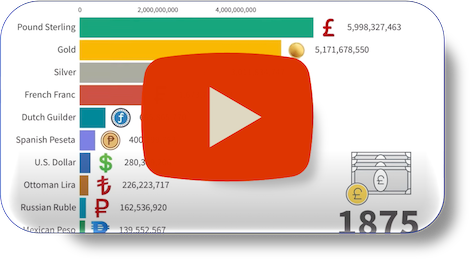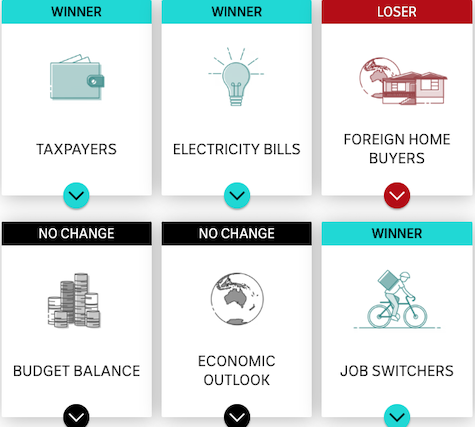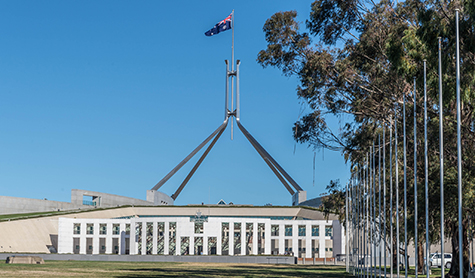Catch-up concessional contributions – strategies and practicalities
It’s been a long time coming but members are finally able to use the catch-up concessional contribution rules for the first time this year (2019–20).

The new rules represent a shift away from the government’s previous “use it or lose it” approach to super contributions and provide members with an important opportunity to make additional contributions in later years, when they may be better able to afford it.
However, the new rules also potentially make salary sacrifice and personal deductible contribution advice more complicated, as advisers need to determine both a member’s eligibility to use these concessions as well as the value of the member’s effective concessional cap in a year.
Catch-up concessional contribution recap
Under the catch-up concessional contribution rules, a member is able to carry forward and contribute any unused concessional contribution cap amounts that accrued in the previous five years (commencing from 1 July 2018) where their total superannuation balance (TSB) at the end of the previous financial year is below $500,000.
For example, taking into account the existing concessional cap of $25,000, the new rules allow an eligible member that had $10,000 of concessional contributions in 2018–19 and a total super balance under $500,000 on 30 June 2019, to make total concessional contributions this year of up to $40,000 ($15,000 + $25,000).
As time goes on, the catch-up rules could allow members to make quite high levels of concessional contributions over one year as members will have access to both the standard concessional cap in that year plus any unused cap amounts from the previous five financial years.
For example, taking things to the extreme, the new rules could allow an eligible member to make total concessional contributions of up to $157,5001 in the 2023–24 financial year, assuming they had no concessional contributions in any of the preceding five financial years. Alternatively, someone earning a salary of $70,000 in 2019–20 and only receiving employer SG contributions would accumulate an unused cap amount over the next two years of $36,5002, allowing total concessional contributions of $64,003 in 2021–22.
Once a member starts to use some of their unused concessional cap amounts, the rules operate on a first-in, first-out basis. For example, assume a member had the following unused cap amounts for the following years:
- 2018–19 – $15,000
- 2019–20 – $13,000
- 2020–21 – $5,000
If the member then exceeded the standard annual concessional cap in 2022–23 by $20,000, the unused concessional cap for 2018–19 would be reduced to nil and the unused cap amount for 2019–20 would be reduced to $8,000.
Finally, it is important to note that a member will only be able to carry forward any unused concessional cap amounts for a maximum of five years. For example, a member’s unused concessional cap amount for 2018–19 must be used by the end of 2023-24.
Unused concessional contribution amounts continue to accrue where TSB is over $500,000
It is important to note that while the $500,000 TSB eligibility requirement restricts a member’s ability to make catch-up concessional contributions in a year, it does not prevent the client from accruing unused concessional cap amounts in that year.
For example, if a member had a TSB of $501,000 on 30 June 2019, the member would be ineligible to contribute any unused concessional cap amounts that accrued in the 2018–19 year in the 2019–20 year. However, if their TSB declined due to negative investment returns or lump sum withdrawals during 2019–20, and was below $500,000 on 30 June 2020, the member could contribute the unused concessional cap amounts that accrued in 2018–19 and 2019–20 during the 2020–21 year.
Practical catch-up contribution issues
Before recommending catch-up concessional contributions, advisers need to confirm a range of issues, including:
- Value of member’s TSB as at 30 June at the end of the previous financial year;
- Value of member’s unused concessional cap amounts for the previous five financial years (commencing from 2018–19); and
- Amount of additional catch-up concessional contributions a member can make in a year, taking into account any other concessional contributions, such as employer SG contributions, that will be made during the year.
1. Total superannuation balance
To determine whether a member is eligible to make catch-up concessional contributions, advisers need to confirm that the member’s total superannuation balance (TSB) is below $500,000 at the end of the previous financial year.
Advisers can determine the value of a member’s TSB by making their own investigations or by getting the client to confirm their TSB value with the ATO — potentially via the myGov website. However, advisers should exercise caution relying on any ATO TSB data and should confirm the data is up to date and accurate and includes all amounts that are included in the calculation of TSB.
For example, the value of a member’s interests in an SMSF will not be reported to the ATO until the fund lodges its SMSF annual return. Depending on an SMSF’s circumstances, this may not be until May the following year. Therefore, SMSF members with a TSB that is likely to be close to the $500,000 threshold may need to wait until the values of the member balances have been confirmed.
2. Value of unused concessional contributions cap amounts
Advisers will need to calculate the value of a member’s unused concessional cap amounts for previous years (commencing 1 July 2018) by making their own investigations, as at the time of writing the ATO does not report this figure. However, the ATO has announced it intends to start reporting unused concessional contributions cap amounts via myGov by the end of 2019.
However, once again, advisers will need to exercise caution relying on ATO unused concessional cap data and should make reasonable inquiries to confirm it is accurate and up to date. In the interim, or as an alternative, advisers should consider contacting the member’s super fund to obtain concessional contribution details for the previous financial years.
In this case, advisers should take care to contact all funds that may have received concessional contributions for the member during the relevant catch-up period. For example, some members could have received contributions to various funds over a number of years due to:
- the member having chosen to roll over to a different fund during the catch-up period and redirecting their employer contributions to the new fund;
- the member having changed jobs during the catch-up period and their new employer contributing their SG contributions to the employer’s default fund;
- the member having multiple jobs and each employer contributing to a different fund;
- the member’s employer contributing SG and salary sacrifice amounts to different funds.
Advisers should also take care to confirm the status of any personal contributions made by the member in the previous year. For example, a fund may be showing a contribution as a personal non-concessional contribution; however, if the member subsequently gave the fund a deduction notice for the contribution, maybe on the advice of their accountant, the contribution would change status from a non-concessional contribution to a concessional contribution.
In addition, an adviser should exercise caution to confirm whether the amount of any deduction claimed on a personal contribution is likely to change. For example, a member that has already made a contribution and lodged a deduction notice may be able to vary the notice down to reduce the amount they claimed as a deduction — maybe because they did not earn as much income as they expected. Alternatively, if a member wishes to increase the amount of the deduction claimed, they could lodge another deduction notice specifying the additional amount they wish to claim.
Where a member has not made any personal deductible contributions during the catch-up period, an adviser could also calculate a member’s unused concessional cap by checking the employer contribution details for the member via their myGov account. While myGov does not report unused concessional cap amounts, it does report employer contribution details for 2018–19, which could allow an adviser to calculate a member’s unused cap amount for that year (and later years). While the ATO has announced it intends to start reporting members’ personal deductible contribution information via myGov, this is not expected until sometime in 2020. Therefore, these amounts would need to be factored in separately.
Another alternative could be to check any payslips for superannuation contribution details. Once again, an adviser would need to check the member had not made any personal deductible contributions and had not changed jobs or had multiple jobs during the relevant bring-forward period.
Finally, as part of calculating the member’s unused cap amount, an adviser will also need to identify any amounts of unused concessional cap that the member may have already used and deduct those amounts from the relevant year. See catch-up concessional contribution recap above for more details.
3. Calculate contribution amount
Once an adviser has confirmed the value of a member’s unused cap amounts, the next step is to determine the member’s effective concessional cap in a year, taking into account the value of any other concessional contributions made during the same year.
For example, if an eligible member had unused concessional cap amounts in 2018–19 of $5,000, their effective concessional cap in 2019–20 would be $30,000. However, if the member will have employer contributions of $21,000 this year, their cap space will only be $9,000.
Therefore, it will be important to take into account the level of a member’s employer contributions that will be made during a year, including any additional contributions due to salary sacrifice arrangements or bonus payments, when determining the additional contributions a member can make during a year.
What could be done.
As previously discussed, the catch-up concessional contribution rules provide members with the flexibility to make additional concessional contributions via either a salary sacrifice arrangement or by making personal deductible contributions in a later year when they may be better able to afford it.
For example, the new rules allow members who have spent time out of the workforce caring for an elderly family member or on maternity leave to make additional concessional contributions to catch up for those contributions they missed out on. Alternatively, the catch-up contribution rules could allow members on average incomes that have only been receiving employer SG amounts to make extra contributions to fully utilise their concessional cap. However, in many cases, the ability to make additional contributions will be entirely dependent on the member’s level of income and their ability to afford extra contributions.
In this case, members wanting to make extra contributions could consider alternative strategies, such as:
- selling assets to fund personal deductible contributions or transferring listed shares or managed funds into an SMSF as an in-specie personal deductible contribution;
- contributing some or all of an annual bonus as a personal deductible contribution;
- contributing all or part of a windfall, such as an inheritance, as a personal deductible contribution; or
- from preservation age, entering into a salary sacrifice arrangement and replacing the lost income with a transition to retirement pension.
Disposal or transfer of assets
Where a member wants to transfer the capital value of assets into super, they could either sell the assets and contribute the proceeds or transfer the assets into an SMSF or super wrap as an in-specie contribution.
In either case, the disposal or transfer will trigger a CGT event and could result in the member realising a large capital gain. However, a member could potentially make a personal deductible contribution to offset some or all of the capital gain. In this case, the deductible contribution amount could be increased if they are eligible to utilise the catch-up contribution rules and have unused cap amounts available.
For example, assume a member earning $70,000 and receiving 9.5 per cent employer SG, sold an asset in 2020–21 realising a net (discounted) capital gain of $35,000. In this case, assuming the member was eligible to make catch-up concessional contributions and had an unused cap amount in 2019–20 of $18,350, they would have an effective concessional cap in 2020–21 of $43,350. Taking into account the 9.5 per cent employer SG contribution, this would allow the member to make a personal deductible contribution of up to $36,500 to fully offset the amount of the capital gain and still remain within their concessional cap.
As a result, by contributing $35,000 of the sale proceeds as a personal deductible contribution, the member will have achieved their objective of boosting their super while also saving $6,800 in tax being the difference between the tax payable on the capital gain of $12,050 and 15 per cent contributions tax of $5,250.
Alternatively, where an eligible member receives an end-of-year bonus, they could achieve a similar result by using the catch-up concessional contributions rules to make a personal deductible contribution equivalent to the pre-tax value of the bonus amount. However, in this case it will be important to factor in any SG payable on the bonus (also taking into account the SG maximum contribution base for the relevant quarter where relied on by the employer) as well as the member’s salary as this could effectively reduce the amount of remaining cap they have available.
Member receiving a windfall
Members receiving a windfall, such as an inheritance, could potentially use the catch-up concessional contribution rules to fully utilise any amounts of unused concessional cap they have available. Also taking into account the deduction available, this could allow them to reduce their tax and further maximise their contributions to super.
For example, an eligible member with $10,000 of unused concessional cap from 2018–19 would have an effective concessional cap in 2019–20 of $35,000. Assuming the member received a small $10,000 inheritance and were already salary sacrificing up to the concessional cap, they could use that amount to make a $10,000 personal deductible contribution — which would result in $1,500 tax payable and net contributions of $8,500.
However, assuming the member was on the 37 per cent tax rate, this would also potentially qualify the member for a tax reduction or refund of $3,700. Assuming the member then contributed that amount to super as a non-concessional contribution, the member would have net contributions of $12,200.
Member has reached preservation age
Members reaching preservation age could also utilise their unused concessional cap by entering into a prospective salary sacrifice arrangement to fully utilise their unused concessional cap over one or more years and then commence a transition to retirement (TTR) pension to replace some or all of their lost income.
While the reduction in the benefit of the salary sacrifice TTR strategy since 1 July 2017 is well understood, it is important to appreciate that this has been due to the combined impact of both:
- the removal of the tax-free status of earnings on assets supporting TTR income streams, and
- the reduction of the concessional cap for members over age 50 from $35,000 to $25,000.
Therefore, the ability of eligible members to use the catch-up concessional contribution rules to salary sacrifice unused cap amounts that have accrued over the previous five years (from 1 July 2018) could see eligible members get an increased benefit from implementing the strategy.
For example, a 60-year-old member on a $100,000 salary with a total super balance of $450,000 on 30 June 2021 would likely accumulate approximately $633,169 in super by age 65, assuming they just continued to receive employer SG contributions over that period.
Alternatively, if they entered into a standard TTR strategy and salary sacrificed up to the standard concessional cap each year and commenced a TTR pension to replace their lost income, they would instead have total super savings of $651,817 by age 65.
However, if the member had $50,000 of unused concessional cap from the previous three years, they could salary sacrifice up $67,500 in the first year to have total concessional contributions of $77,500. In this case, the member would then have an income shortfall of $44,450, which they could replace by commencing a TTR income stream with their super savings of $450,000. After year one, the member would need to reduce their salary sacrifice arrangement to align with the standard concessional cap and roll part of the TTR pension back to accumulation phase to reduce the pension payments. However, by doing so, the member would have total super savings of $662,781 by age 65.
The outcomes are summarised here:
Option 1 – employer SG contributions only
Total super balance: $633,169
Option 2 – salary sacrifice up to standard concessional cap to age 65 with TTR pension payments to replace lost income
Total super balance: $651,817
Benefit over strategy 1: $18,648
Option 3 – salary sacrifice up to effective concessional cap in year 1 then up to standard concessional cap to age 65 with TTR pension payments to replace lost income
Total super balance: $662,781
Benefit over strategy 1: $29,612
Therefore, the TTR salary sacrifice strategy could be used to allow members to fully utilise any unused cap amounts that accrued in the previous five years to maximise their final retirement balance.
Conclusion
The catch-up concessional cap rules may provide eligible members with additional flexibility to top up their superannuation. However, the rules are complicated, and advisers providing advice in this area will need to exercise caution to ensure they capture all relevant amounts so they can correctly calculate a member’s unused concessional cap amounts for previous years, and therefore a member’s effective concessional cap.
Craig Day, executive manager, Colonial First State
As reported in smsfadviser.com
by Sarah Kendle
06 January 2020























